Caladium Cultivars Developed at the UF/IFAS
Caladiums (Caladium x hortulanum) are popular ornamental plants. They are members of the Araceae family and originated in the New World tropics. These plants display a wide diversity of leaf shapes, colors, and color or vein patterns that is rarely found in other cultivated plant species. Their colorful leaves rival many flowers, and the plants grow well in summer heat and shady conditions.
Potted and landscape caladium plants are grown from tubers (they are often called bulbs). Most of the tubers used throughout the world are produced in Florida.
The University of Florida's Institute of Food and Agricultural Sciences (UF/IFAS) initiated a caladium breeding program in 1976 at the Gulf Coast Research and Education Center. So far, this has been the only major organized caladium breeding program in the world. The program's main objectives were to develop new cultivars that: 1) can produce many bright colorful leaves and a high yield of good quality tubers; and 2) have short, sturdy petioles and multi-eyed tubers that can result in increased early leaf production and improved leaf display. Additional goals of this program included the following: 1) to improve the aesthetic values and performance of caladium plants in containers and landscapes; 2) to eliminate the costly labor associated with tuber de-eyeing; and 3) to improve tuber and plant productivity and profitability.
Hybridizations among commercial caladium cultivars followed by rigorous selection and multiple year evaluations on muck and sandy soils resulted in the release of 13 new cultivars between 1988 and 2001 (Table 1). These cultivars possess a diverse range of leaf color or color patterns and have many improved characteristics (plant growth habits, foliage display, tuber sizes and quality, sun tolerance, etc.) that are important for potted and landscape plant production and performance. They are grouped under 8 categories, based on leaf shape and primary colors.
White Fancy-Leaf Type
'Florida Blizzard' (Figure 1) is an attractive addition to the white fancy-leaved cultivar group with its unique foliar color pattern. 'Florida Moonlight' (Figure 2) represents the first release from the UF breeding efforts in the so-called June Bride type. Both cultivars were bred for forcing in 4- to 8-inch containers. They produce a superior number of leaves and make attractive pots when buds are excised. In the landscape, they are best grown in partial-sun to shady locations.
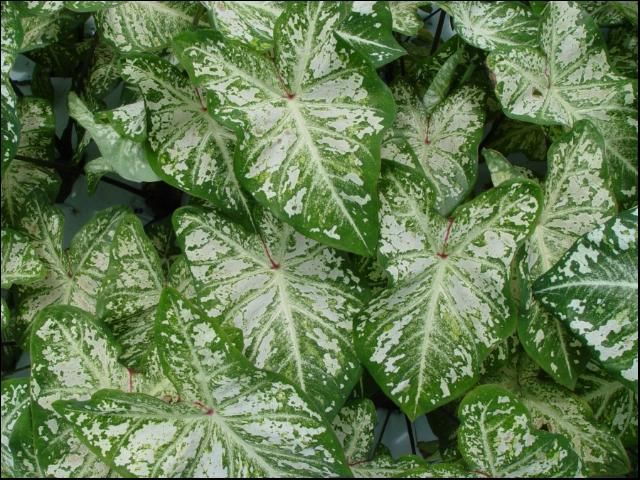
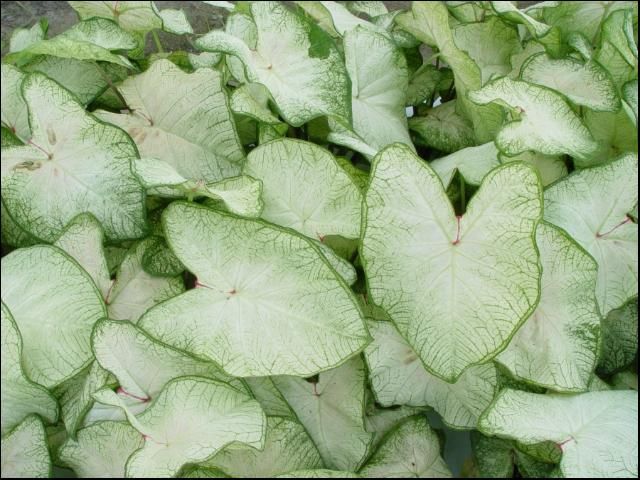
Red Fancy-Leaf Type
'Florida Cardinal' (Figure 3) was bred primarily for forcing in containers. It has a distinctive orange-red color on the surface of tubers.
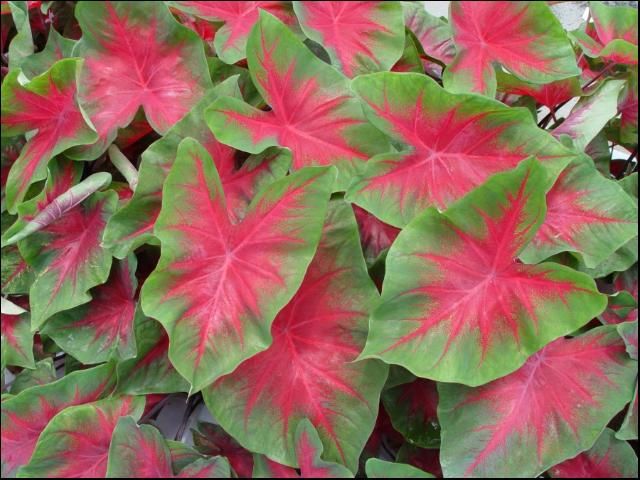
Pink Fancy-Leaf Type
'Florida Roselight' (Figure 4), 'Florida Elise' (Figure 5), and 'Florida Calypso' (Figure 6) were bred for primary use in the landscape in sunny or shady locations, but they can also be used for forcing in containers. They have improved sun tolerance over many of the traditional pink cultivars such as Kathleen, and pink leaf colors do not fade to an unappealing tan color when grown without shade.
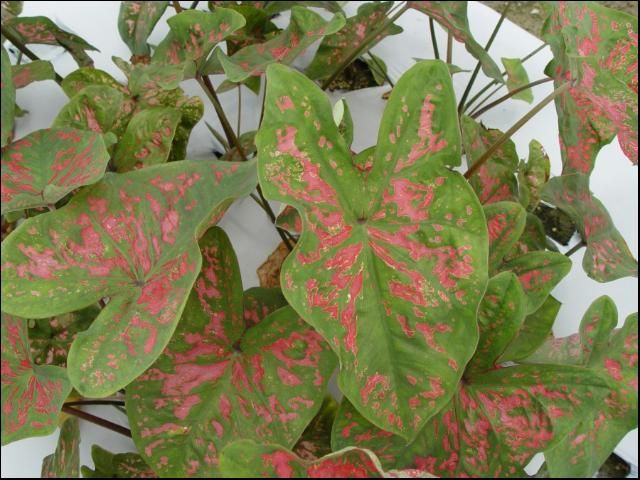
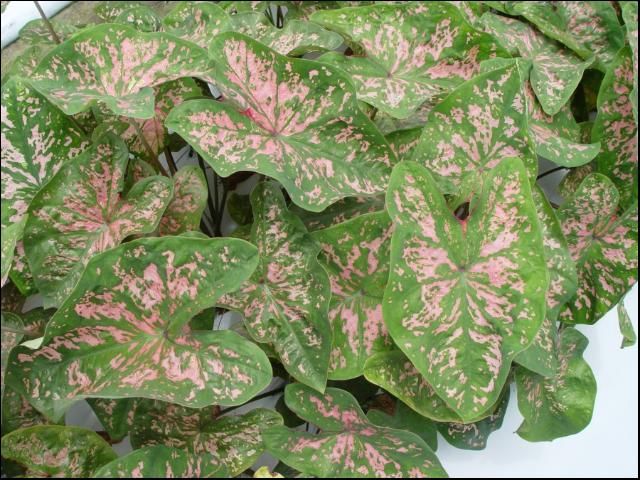
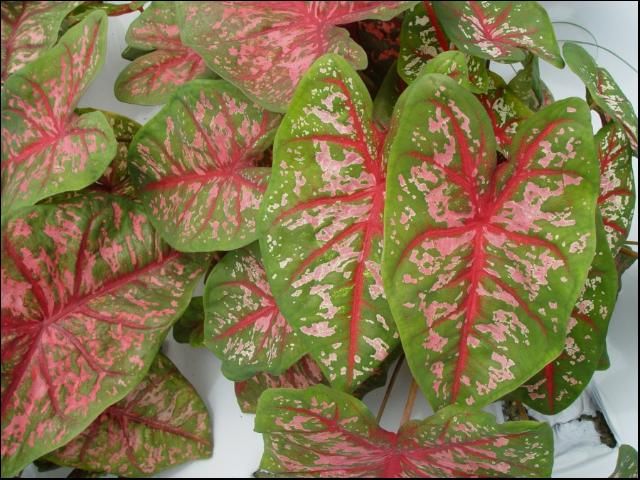
Multicolor Fancy-Leaf Type
'Florida Fantasy' (Figure 7) and 'Florida Sunrise' (Figure 8) show distinct color definitions between the primarily white-faced leaves and the red veins that are rarely found in previous commercial cultivars. They were developed primarily for container production and require de-eyeing for best performance. Shading should be provided in the landscape to avoid possible foliage burning.
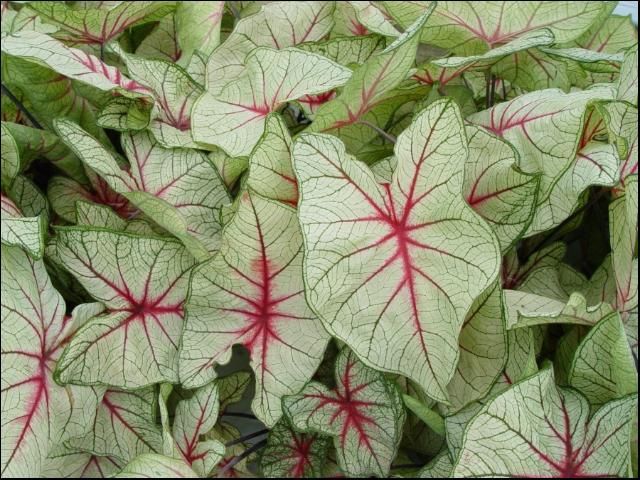
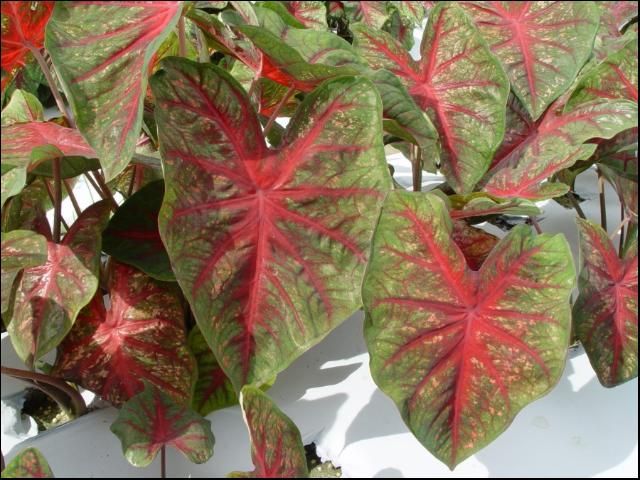
White Lance-Leaf Type
'Florida White Ruffles' (Figure 9) and 'Florida Whitewater' (Figure 10) were bred primarily for forcing in containers. They produce highly compact, attractive plants with many leaves and do not require bud excision in forcing.
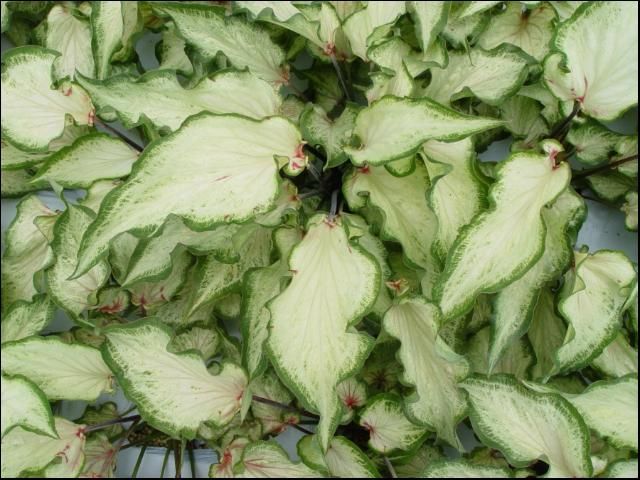

Red Lance-Leaf Type
'Florida Red Ruffles' (Figure 11) is more cold-tolerant than Red Frill and Rosalie, the two major commercial red lance-leaf cultivars. This cold tolerance may help to extend its geographical use in the landscape.
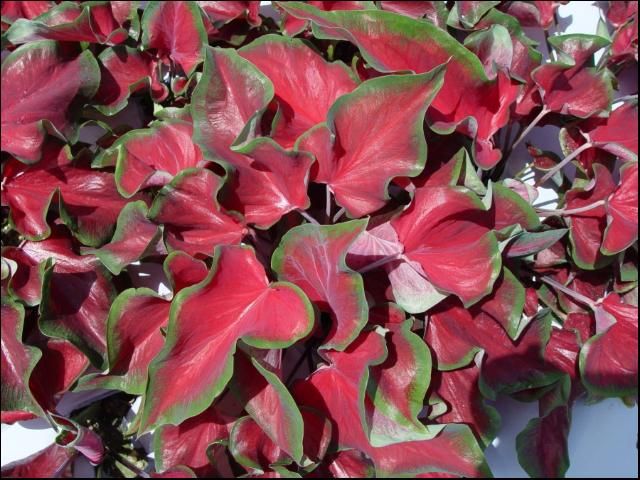
Pink Lance-Leaf Type
'Florida Sweetheart' (Figure 12) produces many wide lance leaves with a bright pink color in a unique pattern. It has been the most widely accepted cultivar originating from this breeding program.

Green Lance-Leaf Type
'Florida Irish Lace' (Figure 13) produces many long, narrow, green leaves with wavy margins. It is intended for planting tubers directly into the landscape. Plants can be used as a landscape border or in combination with other red or white lance-leaved cultivars.
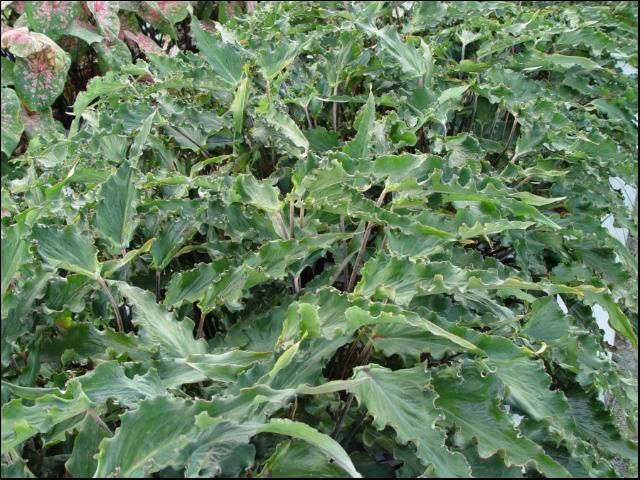
Literature Cited
Baldwin, B.D., G.J. Wilfret, and B.K. Harbaugh. 2002. 'Florida White Ruffles' - A white strap-leaved caladium for small pots, hanging baskets, or sunny landscapes. HortScience 37(5):838–840.
Harbaugh, B.K., B.D. Miranda, and G.J. Wilfret. 2002. 'Florida Blizzard' - A white fancy-leaved caladium for large pots or shady landscapes. HortScience 37(5):844–846.
Miranda, B.D. and B.K. Harbaugh. 2003. 'Florida Moonlight' - A white fancy-leaved caladium for pots and shady landscapes. HortScience 38(4):635–637.
Wilfret, G.J. 1988. Florida Roselight, A rose caladium for the landscape. Florida Agricultural Experiment Station, Institute of Food and Agricultural Sciences, University of Florida, Circular S-352.
Wilfret, G.J. 1991. Florida Elise: A pink caladium for landscape and containers. Florida Agricultural Experiment Station, Institute of Food and Agricultural Sciences, University of Florida, Circular S-375.
Wilfret, G.J. 1991. Florida Sweetheart: A rose lance caladium for landscape and containers. Florida Agricultural Experiment Station, Institute of Food and Agricultural Sciences, University of Florida, Circular S-380.
Wilfret, G.J. 1991. Florida Fantasy: A multicolored caladium for containers. Florida Agricultural Experiment Station, Institute of Food and Agricultural Sciences, University of Florida, Circular S-381.
Wilfret, G.J. 1991. Florida Red Ruffles and Florida Irish Lace: Two new lance-leaf caladium cultivars. HortScience 31:564 (Abstract).
Wilfret, G.J. 1992. 'Florida Cardinal' caladium. HortScience 27(12):1342-1344.Wilfret, G.J. 1993. 'Florida Sunrise' caladium. HortScience 28(3):237–238.
Wilfret, G.J. 1995. 'Florida Calypso': A multicolored caladium for the landscape and containers. HortScience 30(4):777.
Wilfret, G.J., B.K. Harbaugh, and B.D. Miranda. 2002. 'Florida Whitewater' - A white lance-leaved caladium for small pots, hanging baskets, or sunny landscapes. HortScience 37:841–843.


